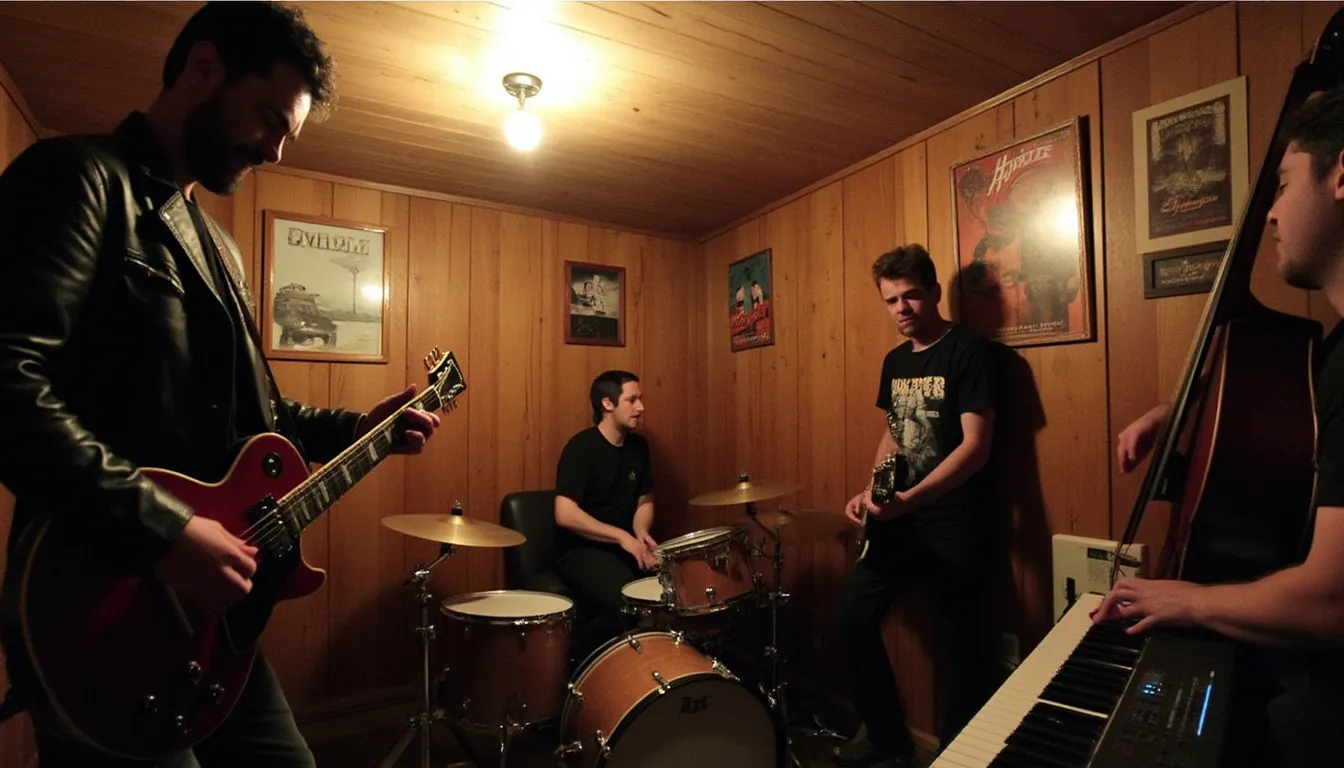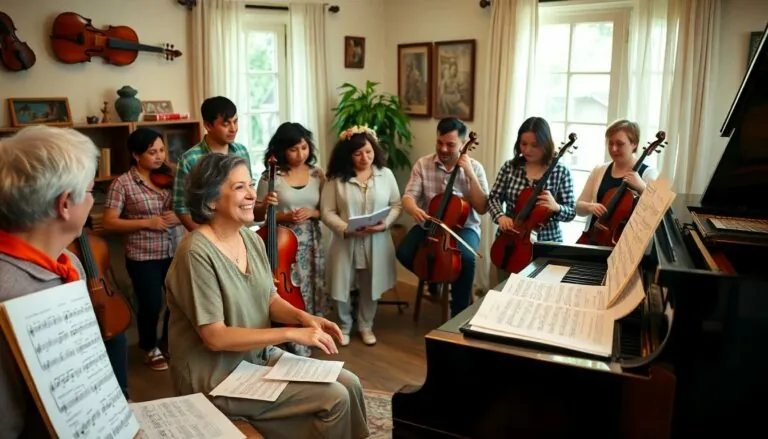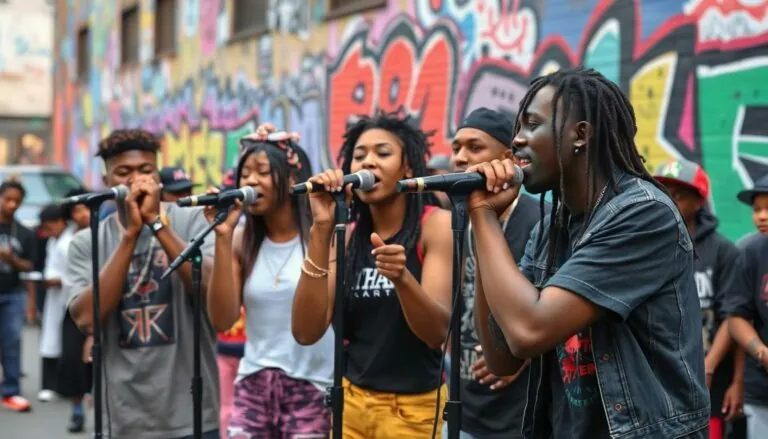Table of Contents
ToggleIn the classical era, music wasn’t just for the elite—it was the heartbeat of middle-class life. Imagine bustling salons filled with laughter, where the sweet sounds of a string quartet mingled with the aroma of freshly baked pastries. For the middle-class public, music was a delightful escape from the daily grind, offering a chance to revel in the arts without breaking the bank.
Overview of Music in the Classical Era
Music played a vital role in the lives of the middle-class public during the classical era. Salons frequently hosted gatherings where friends and family enjoyed performances from musicians. String quartets gained popularity, providing an accessible yet sophisticated form of entertainment. Performers often included amateur musicians, allowing everyday people to engage with music directly.
Concerts also flourished in urban centers, bringing diverse musical styles to broader audiences. Public concerts typically featured popular composers such as Haydn, Mozart, and Beethoven. The emergence of printed music made it easier for individuals to acquire and play compositions at home. Music education grew in importance, with many families investing in lessons for their children.
Social events often incorporated music, enhancing their festive atmospheres. Dance forms, including the minuet, provided an opportunity for community members to participate actively. Portable instruments like pianos made music-making possible in smaller settings, contributing to a more intimate musical experience.
In taverns and public houses, musicians entertained patrons, showcasing folk music alongside classical works. The accessibility of music fostered appreciation and interaction among people from various backgrounds. Music thus became a shared cultural experience, embodying the spirit of the classical era.
The middle class embraced music not merely as a luxury but as an essential part of daily life. Performance opportunities allowed them to cultivate talent and express creativity. These varied avenues for enjoying music significantly enriched their social and cultural environments.
Public Access to Music
Music permeated everyday life in the classical era, making it accessible to the middle class. Public performances and community gatherings allowed broader participation in musical experiences.
Music in Public Spaces
Concerts in parks and town squares provided essential entertainment for the public. Urban centers often hosted performances featuring popular music, allowing audiences to enjoy works from celebrated composers. Venues offered a lively atmosphere for mingling and appreciating talent. Street musicians played various styles, enriching the cultural environment. Patrons often congregated to enjoy spontaneous musical displays, fostering community engagement.
Community Events and Gatherings
Festivals and local celebrations frequently included music as a core component. These events featured amateur and professional musicians entertaining attendees, creating a festive spirit. Guests appreciated the chance to dance and socialize amidst musical performances. Gatherings like picnics or neighborhood parties encouraged families to share music, enhancing bonds. Notably, communal singing and informal performances became a staple, reinforcing social connections.
Domestic Music Enjoyment
Music played a significant role in the daily lives of the middle-class public during the classical era. Families engaged with music in various ways, creating vibrant home environments centered around musical enjoyment.
The Role of Family Music-making
Family music-making fostered connections among relatives and friends. Parents encouraged children to learn instruments, promoting musical skills from a young age. Together, family members would gather around the piano or at informal gatherings, sharing performances. These sessions featured both classical pieces and popular tunes, showcasing the diverse musical taste of the time. Participating in music-making events allowed families to bond and create lasting memories through shared musical experiences.
The Popularity of Sheet Music
Sheet music became a vital resource for middle-class households. The rise of printing technology made music accessible at affordable prices. Families collected popular compositions and classical works, providing opportunities for home performances. Children often practiced these pieces, which encouraged learning and appreciation of music. Social gatherings frequently included readings from recently acquired sheet music, fostering a lively atmosphere. This trend created a culture where music became a shared pastime, enriching social connections and community interactions.
Concerts and Performances
Concerts and performances served as vital platforms for middle-class enjoyment of music during the classical era. These events brought people together and fostered a communal love for the arts.
The Rise of Concert Halls
Concert halls emerged as dedicated spaces for public performances. Cities began constructing these venues to accommodate larger audiences and share diverse musical experiences. Notable composers like Haydn and Mozart frequently performed in these halls, attracting enthusiastic crowds. Furthermore, the architecture of these spaces often enhanced sound quality, creating memorable auditory experiences. Music lovers flooded concert halls, appreciating the sophistication of live performances. This trend marked a shift in accessibility, allowing the middle class to immerse themselves in high-quality music without the exclusivity of private salons.
Patronage and the Middle-Class Audience
Patronage patterns shifted, allowing middle-class audiences to support musicians directly. Increased public interest in concerts prompted local governments and private sponsors to fund performances. In turn, musicians benefitted from this financial support, leading to a more vibrant musical landscape. Engaging with performances became a norm, broadening the appeal of various music styles. Families attended concerts as a social outing, sharing the experience with friends and community members. Influential patrons emerged from the middle class, enabling a new generation of composers and performers to thrive in an increasingly inclusive music scene. This dynamic environment enriched cultural life and solidified the role of music in everyday activities.
Influence of Technology
Technology profoundly influenced the music experience for the middle-class public in the classical era. Advances in instrument manufacturing and music distribution reshaped access and enjoyment.
The Impact of Instrument Manufacturing
Innovations in instrument manufacturing made music more accessible to the middle class. Piano production increased significantly, which allowed families to purchase quality instruments at affordable prices. Other instruments, like violins and flutes, saw similar advancements, with more craftsmen entering the market. As a result, diverse musical styles flourished, giving rise to amateur musicians in homes across urban areas. Enhanced instrument designs and improved sound quality encouraged families to engage in music-making together, fostering stronger social bonds and creating lasting memories.
Innovations in Music Distribution
Music distribution transformed how the middle class engaged with music. The widespread availability of printed music created an explosion of popular compositions for families to enjoy. As sheet music became affordable, households amassed collections of their favorite pieces, allowing for at-home performances. This shift not only democratized music but also encouraged people to develop their musical skills. Public concerts showcased pieces from renowned composers, further influencing demand for sheet music. Overall, enhanced distribution methods cultivated a vibrant musical culture among the middle class, making music a staple in everyday life.
The classical era marked a transformative time for the middle-class public, where music became an essential part of daily life. Through vibrant salons, public concerts, and intimate home gatherings, music fostered connections and created shared memories. The accessibility of printed music and the rise of affordable instruments empowered families to engage with music in new ways.
As musicians entertained in various venues, from taverns to concert halls, the middle class embraced diverse musical styles. This period not only enriched their cultural landscape but also solidified music’s role as a unifying force in their communities. Ultimately, the classical era laid the groundwork for a lasting appreciation of music that continues to resonate today.






